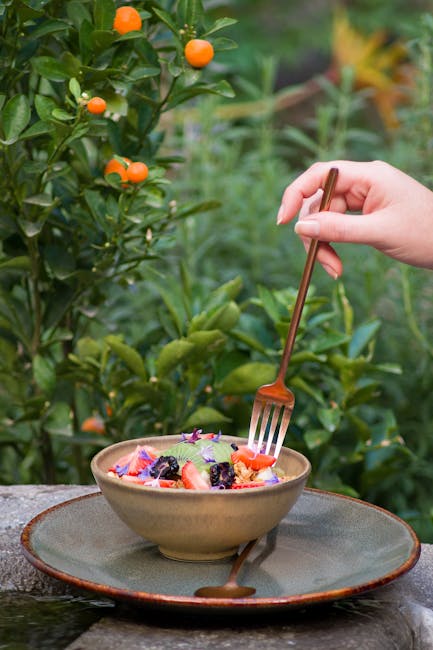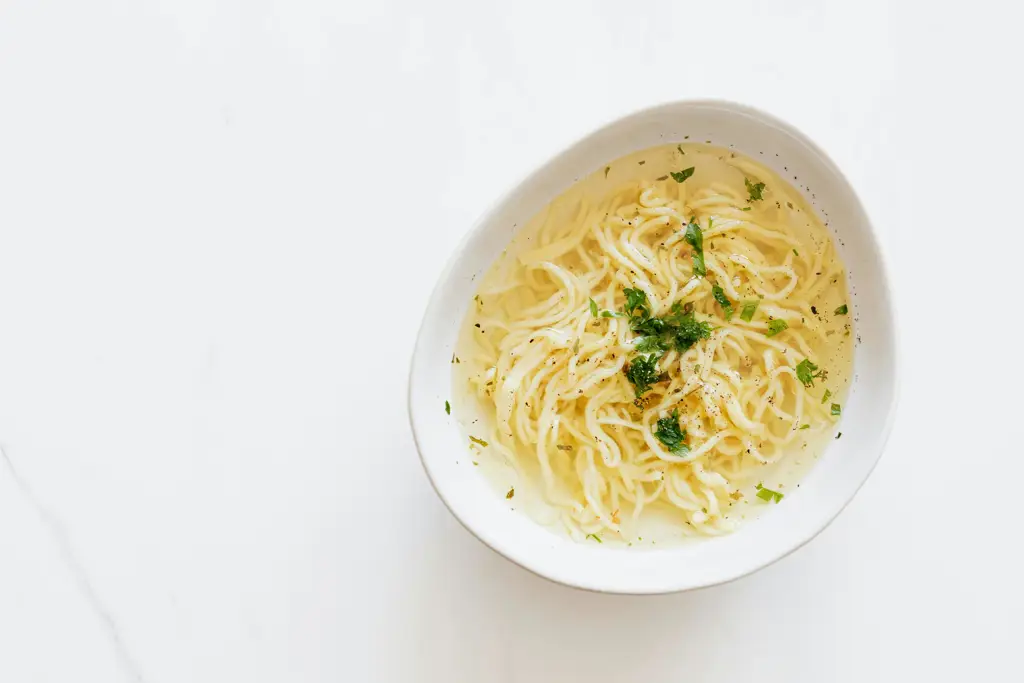Tzatziki, a creamy, cool, and intensely flavorful sauce, is a cornerstone of Mediterranean cuisine, particularly associated with Greek and Turkish culinary traditions. Its precise origins are somewhat debated, with both Greece and Turkey claiming it as their own. However, the consensus points to a long and rich history, deeply intertwined with the agricultural practices and culinary evolution of the region. Evidence suggests variations of the sauce have existed for centuries, with early forms likely utilizing ingredients readily available in the Mediterranean: yogurt, cucumbers, garlic, and herbs. The exact timing and precise evolution are difficult to pinpoint due to a lack of extensive written records from that era, but its enduring popularity speaks volumes about its inherent deliciousness and adaptability.
The core ingredients of tzatziki – yogurt, cucumber, garlic, and dill – represent a beautiful simplicity that belies its complex flavor profile. The use of strained yogurt is crucial, as it ensures a thicker, creamier consistency, preventing a watery sauce. The refreshing crunch of the cucumber perfectly complements the tang of the yogurt and the pungent bite of the garlic. Fresh dill, along with other herbs like mint or parsley, adds a bright, herbaceous note that balances the richness of the yogurt. This combination of textures and flavors has made tzatziki a beloved condiment and sauce across the world. Recent market research indicates a significant rise in the popularity of tzatziki, particularly in Western countries, with sales increasing by an estimated 15% in the past five years. This growth demonstrates a global appreciation for this versatile and delicious sauce.
Beyond its culinary appeal, tzatziki holds significant cultural importance. It’s deeply embedded in the social fabric of Greek and Turkish communities, appearing as a staple in countless traditional dishes. It’s often served as a dip with pita bread or vegetables, used as a marinade for meats, or as a topping for grilled dishes and salads. Its presence at family gatherings, celebrations, and everyday meals underscores its integral role in the culinary heritage of these regions. The recipe itself, passed down through generations, often incorporates subtle variations based on family traditions and regional preferences. This variation highlights the adaptability of the recipe and its ongoing evolution within different cultural contexts. This cultural significance extends beyond the Mediterranean; Tzatziki’s global popularity is a testament to its ability to transcend geographical boundaries and appeal to diverse palates.
Ingredients and Measurements
Creating the perfect tzatziki sauce hinges on using fresh, high-quality ingredients and precise measurements. The balance of flavors is delicate, so paying attention to detail is crucial. This recipe yields approximately 2 cups of tzatziki, perfect for serving with several meals.
Cucumbers: We’ll start with 2 large cucumbers (approximately 1 pound total). The type of cucumber matters! English cucumbers (also known as hothouse cucumbers) are ideal because they have fewer seeds and less water, resulting in a less watery tzatziki. If you only have regular cucumbers, peel them and remove the seeds before grating. This significantly reduces the final sauce’s water content. Approximately 1 1/2 cups of grated cucumber after preparing is needed.
Greek Yogurt: The foundation of any good tzatziki is full-fat Greek yogurt. Avoid using low-fat or non-fat yogurt as it lacks the richness and creaminess necessary for a truly satisfying texture. Use 1 1/2 cups (355 grams) of thick, high-quality Greek yogurt. The higher the fat content, the better the taste and texture.
Garlic: Fresh garlic is essential! We’ll use 2-3 cloves of garlic, minced finely. Don’t be shy with the garlic; it’s a key flavor component. However, if you prefer a milder flavor, start with 2 cloves and add more to taste. Remember to mince the garlic as finely as possible to avoid large chunks in the final product.
Fresh Dill: Fresh dill provides a bright, herbaceous note that complements the other ingredients perfectly. Use 1/4 cup (approximately 1/3 of a bunch) of fresh dill, finely chopped. Avoid using dried dill, as it lacks the vibrancy and freshness of the fresh herb. If you don’t have fresh dill, you can substitute with 1 tablespoon of dried dill, but the flavor will be noticeably different.
Lemon Juice: A touch of acidity balances the richness of the yogurt and garlic. Use 2 tablespoons of fresh lemon juice. Freshly squeezed lemon juice is best; bottled lemon juice often lacks the same bright, zesty flavor. Adjust the amount according to your preference – you might want slightly more or less depending on the acidity of your lemons.
Olive Oil: A good quality extra virgin olive oil adds depth and richness. Use 2 tablespoons of extra virgin olive oil. Don’t skimp on the olive oil; it contributes significantly to the overall flavor and texture.
Salt and Pepper: Season generously with salt and pepper to taste. Start with 1 teaspoon of salt and 1/2 teaspoon of black pepper, but adjust according to your preference. Taste the tzatziki before serving and add more salt and pepper as needed. Remember, you can always add more seasoning, but you can’t take it away.
Optional additions: Many variations exist; you can add 1-2 tablespoons of finely chopped fresh mint for a slightly different flavor profile, or a pinch of red pepper flakes for a touch of heat.
Equipment and Utensils
Making the perfect tzatziki sauce requires the right tools to ensure smooth, creamy consistency and effortless preparation. While you might already have most of these items in your kitchen, paying attention to detail in your equipment choices will significantly impact the final product.
A high-quality box grater is essential. You’ll be grating cucumbers, and a sharp, efficient grater will save you time and prevent frustration. Avoid using a food processor for grating cucumbers for tzatziki, as it can release too much water, resulting in a watery sauce. A standard box grater with at least four different grating surfaces will provide the best results. Choose one made from durable stainless steel for easy cleaning and longevity.
A fine-mesh sieve or cheesecloth is crucial for removing excess moisture from the grated cucumbers. This step is vital for achieving the perfect creamy texture. The excess moisture in the cucumbers can dilute the flavor and create a watery tzatziki. Use a large bowl underneath the sieve to collect the cucumber juice. A standard 2-quart bowl will suffice.
A good-sized mixing bowl is necessary for combining all the ingredients. A 2-3 quart bowl is ideal for the typical batch size of tzatziki. Choose a bowl that is wide enough to easily incorporate all the ingredients without splashing. Stainless steel or glass bowls are the best choices because they are non-reactive and easy to clean.
Measuring cups and spoons are essential for accuracy. Precise measurements of ingredients are crucial for achieving the desired flavor balance in your tzatziki. Invest in a set of measuring cups and spoons that are both accurate and easy to use. You will need measuring cups for larger quantities (such as the yogurt) and measuring spoons for smaller quantities (such as the garlic and dill).
A whisk or fork will be needed to thoroughly combine the ingredients. A whisk is preferred for its ability to incorporate air and create a smoother, creamier texture. However, a fork works just as well if you don’t have a whisk. Ensure that you thoroughly mix all ingredients to distribute the flavors evenly throughout the sauce.
For storage, choose an airtight container. This prevents the tzatziki from drying out and absorbing unwanted odors from the refrigerator. A glass container is ideal as it is both airtight and non-reactive. Ensure your container is appropriately sized to comfortably hold the quantity of tzatziki you’ve prepared, leaving some room at the top to prevent overflow.
Finally, don’t forget a clean, dry towel to pat the grated cucumbers dry after sieving. This seemingly small detail often gets overlooked but is essential to the success of this recipe. A clean kitchen towel or paper towels will do the job perfectly.
Preparation of Cucumber
The cucumber is a crucial component of tzatziki, contributing both its refreshing crunch and subtle flavor. Proper preparation is key to achieving the perfect texture and preventing a watery sauce. We’ll be focusing on removing excess moisture, a common issue that can dilute the overall taste and consistency.
Begin with approximately 1 large English cucumber (about 1 pound) or 2 smaller Persian cucumbers. English cucumbers are preferable due to their lower water content, resulting in a less watery tzatziki. However, Persian cucumbers work well too; just be extra diligent with the draining process.
Wash the cucumber thoroughly under cold running water. Scrub gently to remove any dirt or debris from the skin. Do not peel the cucumber unless you prefer a smoother texture. The skin adds a pleasant bitterness that balances the richness of the yogurt and garlic.
Now comes the crucial step of removing excess moisture. Simply slicing the cucumber will not suffice. The high water content needs to be addressed. There are two primary methods for this: grating and salting. We recommend the salting method for superior results.
Method 1: Salting. Once washed, coarsely grate the cucumber using a box grater. Place the grated cucumber in a colander lined with a clean kitchen towel or cheesecloth. Generously sprinkle 1-2 teaspoons of kosher salt over the grated cucumber. The salt will draw out the excess moisture. Gently toss to ensure even distribution of the salt.
Let the cucumber sit in the colander for at least 15-20 minutes. During this time, you’ll see a significant amount of liquid accumulate in the bottom of the colander. After this time, squeeze the cucumber firmly in the cheesecloth to remove as much liquid as possible. This step is essential for preventing a watery tzatziki.
Method 2: Grating and Pressing (Alternative) If you prefer not to use salt, you can grate the cucumber and then wrap it tightly in a clean kitchen towel or cheesecloth. Place a heavy object on top (like a few cans or a heavy book) for at least 15-20 minutes to press out the excess moisture. This method is slightly less effective at moisture removal than salting.
Important Note: Regardless of the method you choose, thoroughly removing the excess moisture is paramount. The drier the cucumber, the creamier and more flavorful your tzatziki will be. After the draining process, you can finely chop the grated cucumber if desired, for a less coarse texture. This is optional, depending on personal preference.
Once the cucumber is properly prepared, it’s ready to be incorporated into your delicious tzatziki sauce. Remember to taste and adjust seasoning as needed. Enjoy!
Preparation of Garlic
Garlic is a cornerstone of authentic tzatziki, contributing a significant portion of its pungent and savory flavor profile. Proper preparation is crucial to achieving the perfect balance – avoiding harsh rawness while retaining its vibrant character. We’ll explore several methods, each with its own advantages and disadvantages for your tzatziki.
Method 1: Mincing: This is the most common method and yields a relatively fine texture. Begin by separating the cloves from the garlic bulb. You can easily do this by gently squeezing the bulb until the cloves pop out. Peel each clove by gently pressing down on the wide end with the flat side of a knife, then sliding the knife under the skin to loosen it. Once peeled, use a sharp chef’s knife to finely mince the garlic. Aim for a consistency where you have small, roughly uniform pieces, rather than a complete paste. For a typical batch of tzatziki (using around 2 cups of yogurt), use 2-3 large cloves of garlic. Using too much garlic can overpower the other flavors, while too little will diminish its impact.
Method 2: Pressing: A garlic press offers a quick and efficient way to mince garlic, yielding a very fine paste. Simply insert a peeled garlic clove into the press and firmly squeeze the handle. This method is convenient, but it can sometimes release more of the garlic’s pungent compounds, potentially resulting in a slightly more bitter or aggressive flavor. Again, 2-3 large cloves are recommended for a standard recipe. If using a press, consider adding the garlic towards the end of the mixing process to help mitigate any potential bitterness.
Method 3: Grating: Grating garlic on a microplane or fine grater produces a very fine texture, similar to a paste. This method, however, requires careful attention to avoid grating your knuckles! Use a firm grip and a gentle hand. This technique is excellent for achieving a smooth, almost emulsified texture in your tzatziki. Similar to the pressing method, start with 2-3 large cloves and adjust according to taste. Remember that the grated garlic will release more of its oils and flavor compounds more quickly.
Method 4: Roasting: For a milder, sweeter garlic flavor, roasting is a superior choice. Preheat your oven to 400°F (200°C). Toss whole, unpeeled garlic cloves with a drizzle of olive oil and roast for 20-25 minutes, or until soft and caramelized. Once cool enough to handle, squeeze the roasted cloves from their skins. The roasted garlic will have a noticeably softer, less pungent flavor that complements the other ingredients beautifully. Use 4-5 cloves of garlic when roasting, as the roasting process mellows the flavor considerably. This method is particularly well-suited for those sensitive to raw garlic’s strong taste.
Professional Recommendation: Regardless of the method you choose, always taste your garlic before adding it to the tzatziki. This allows you to gauge its intensity and adjust the quantity accordingly. Remember that the flavor of garlic can vary depending on the variety and its freshness. Adjusting the garlic amount ensures your tzatziki is perfectly balanced and delicious.
Making the Sauce
Creating the perfect tzatziki sauce hinges on a few key elements: using high-quality ingredients, achieving the right consistency, and balancing the flavors. Let’s dive into the process step-by-step.
First, we’ll begin with the cucumbers. Choose firm, English cucumbers for the best results. Their thinner skin and less watery flesh prevent the sauce from becoming overly diluted. Peel one large English cucumber (approximately 1 pound) and coarsely grate it. To remove excess moisture, which is crucial for a thick and flavorful tzatziki, place the grated cucumber in a fine-mesh sieve lined with a clean kitchen towel or cheesecloth. Generously salt the grated cucumber (about 1 teaspoon of kosher salt). This draws out excess water through osmosis. Let it sit for at least 15-20 minutes, pressing gently with the back of a spoon every few minutes to encourage more liquid release. Discard the liquid that collects in the bowl beneath the sieve.
While the cucumber is draining, prepare the remaining ingredients. You’ll need 2 cups of Greek yogurt. Use full-fat Greek yogurt for the creamiest, richest texture. Low-fat or non-fat options will result in a thinner, less satisfying sauce. Next, finely mince 2 cloves of garlic. Don’t overdo the garlic; a subtle garlic flavor complements the other ingredients best. Too much garlic can overpower the delicate cucumber and yogurt flavors. Measure out 2 tablespoons of fresh lemon juice – freshly squeezed is always preferred for its brighter, more vibrant taste. You’ll also need 2 tablespoons of extra virgin olive oil, and 1 tablespoon of fresh dill, finely chopped. A pinch of salt and freshly ground black pepper to taste will complete the flavor profile.
Once the cucumber has drained, squeeze out as much remaining moisture as possible. This step is incredibly important; excess water will significantly thin your tzatziki. Now, combine the drained cucumber, Greek yogurt, minced garlic, lemon juice, olive oil, and dill in a medium-sized bowl. Gently fold all the ingredients together, avoiding vigorous stirring which can incorporate too much air and lead to a less smooth texture. Season generously with salt and freshly ground black pepper to taste. Taste and adjust the seasoning as needed – you might want a little more lemon juice for acidity or a touch more salt for depth.
For an even smoother tzatziki, you can briefly pulse the mixture in a food processor. However, be careful not to over-process; a slightly chunky texture is desirable. Once you’ve reached your preferred consistency, cover the bowl and refrigerate for at least 30 minutes to allow the flavors to meld and the sauce to chill. This step enhances the overall taste and texture. Serve chilled with your favorite Mediterranean dishes, such as gyros, grilled meats, or as a dip with pita bread. Enjoy!
Taste and Adjust Seasoning
Tasting your tzatziki is the most crucial step in achieving the perfect balance of flavors. Don’t skip this! Even with precise measurements, variations in the ingredients’ inherent saltiness, acidity, and sweetness can significantly impact the final product. This stage allows you to personalize the recipe to your preferences and ensure a truly delicious outcome.
Begin by taking a generous spoonful of your tzatziki and placing it on a clean spoon. Allow it to sit on your tongue for a few seconds, letting the flavors develop. Pay close attention to the saltiness, acidity, garlic intensity, and overall balance. Is it too salty? Too tart? Not garlicky enough? These are the questions you need to answer.
If the tzatziki is too salty, you may need to add a little more plain yogurt or cucumber to dilute the saltiness. Adding a tablespoon or two of plain yogurt at a time is recommended, as it’s easier to add more than to take away. Stir well after each addition and taste again. If the saltiness is only slightly off, you may be able to correct it simply by adding a splash of water (about 1-2 teaspoons) and stirring thoroughly.
If the tzatziki lacks acidity, a squeeze of fresh lemon juice can help brighten up the flavors. Start with ½ a teaspoon of fresh lemon juice and gradually add more, tasting after each addition, until you achieve the desired level of tanginess. Avoid using bottled lemon juice, as it often contains preservatives that can alter the taste. Freshly squeezed lemon juice is always best.
If the garlic flavor is too subtle, you can add more minced garlic. However, start with a small amount (¼ – ½ teaspoon), as garlic flavor can be overpowering. Remember that the flavor of garlic intensifies as it sits, so it’s best to err on the side of caution. If you’ve already added a significant amount of garlic and it’s still not strong enough, consider adding a pinch of garlic powder for a more subtle boost.
The overall balance is equally important. Does one flavor dominate the others? If so, you might need to adjust the quantities of the other ingredients accordingly. For example, if the cucumber is overpowering, you may want to reduce the amount slightly. Conversely, if the yogurt is too dominant, you could increase the amount of cucumber or garlic to balance it out.
Finally, consider the consistency. Is it too thick or too thin? You can adjust the consistency by adding more yogurt for a thinner tzatziki or draining more liquid from the grated cucumber for a thicker one. Remember to always stir thoroughly after each adjustment to ensure the flavors are evenly distributed.
Taste testing is an iterative process. Don’t be afraid to experiment and make small adjustments until you’re completely satisfied with the flavor profile. The goal is to create a tzatziki sauce that is perfectly balanced, flavorful, and reflects your personal taste preferences.
Recommendations for the Best Tzatziki Sauce
To achieve the creamiest, most flavorful tzatziki, meticulous attention to detail is key. Start with high-quality ingredients. Greek yogurt is paramount; choose a full-fat variety for optimal richness and creaminess. Avoid using low-fat or non-fat yogurt, as it will lack the necessary texture and mouthfeel. Similarly, select fresh, crisp cucumbers – their water content significantly impacts the sauce’s consistency. Grate them finely and drain them thoroughly in a sieve to remove excess moisture, preventing a watery tzatziki.
Fine-tuning the flavor profile is crucial. The balance between garlic, lemon juice, and dill is subjective, so feel free to adjust the quantities to your preference. If you prefer a more pronounced garlic flavor, add more than the recipe suggests. Conversely, a gentler garlic taste can be achieved by using less. Similarly, the lemon juice’s acidity brightens the flavors; adjust the amount to find your ideal level of tartness. Fresh dill is essential for that authentic tzatziki taste; don’t substitute with dried dill, as the flavor will be vastly different.
For optimal freshness and flavor, prepare the tzatziki shortly before serving. While it can be made ahead, allowing the flavors to meld, prolonged storage can lead to a watery consistency. If making ahead, it’s best to store it in an airtight container in the refrigerator for no more than 2 days. To prevent the sauce from becoming watery, do not add salt until just before serving or even at the time of serving. The salt draws out moisture from the cucumber.
Serving suggestions are plentiful. Tzatziki is a classic accompaniment to grilled meats, particularly lamb, chicken, and souvlaki. It’s also a fantastic addition to pita bread, wraps, and sandwiches. Consider using it as a dip for vegetables like carrots, celery, and bell peppers, or as a topping for baked potatoes or fish. Its refreshing taste also makes it an excellent addition to salads, adding a creamy, tangy element.
Complementary dishes often showcase the versatility of tzatziki. It pairs beautifully with Mediterranean-inspired dishes like falafel, hummus, and baba ghanoush. Its coolness cuts through the richness of heavier dishes, making it a perfect counterpoint to roasted vegetables or grilled halloumi cheese. Incorporate it into your favorite pasta salad for a zesty twist.
Nutritional Information (per 100g, approximate values will vary based on ingredients used): Calories: Approximately 150-200; Fat: 10-15g; Protein: 5-8g; Carbohydrates: 5-10g; Fiber: 1-2g. Note: These are estimates and can vary significantly depending on the type and amount of yogurt and other ingredients used. For precise nutritional information, use a nutrition calculator with your specific recipe details.
Storage: Store leftover tzatziki in an airtight container in the refrigerator for up to 2 days. For longer storage, consider freezing it in ice cube trays for individual portions. Thaw overnight in the refrigerator before serving.





